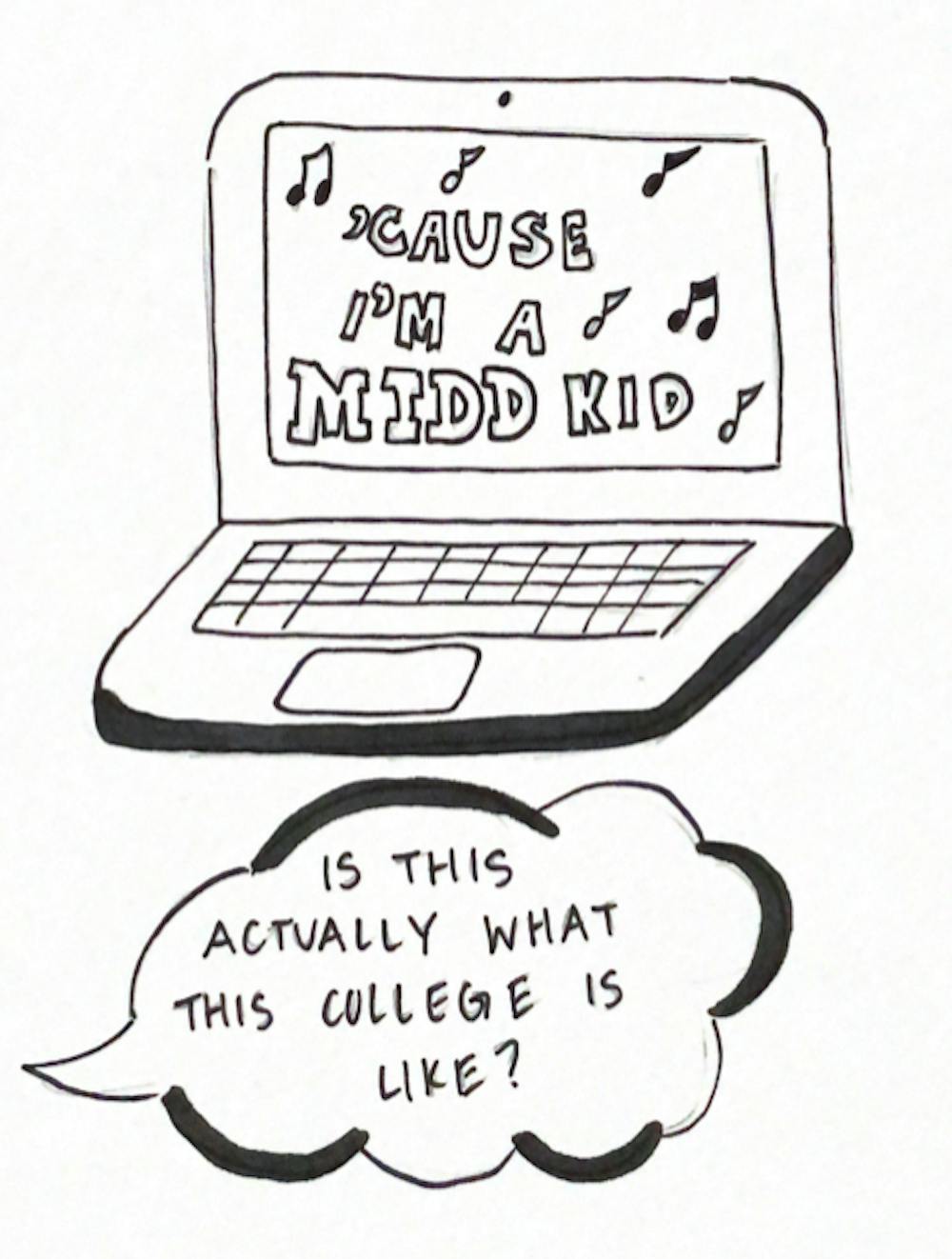Though it’s been over a decade since the infamous “Midd Kid” music video first graced the internet, many current students are still well acquainted with its catchy chorus. The satirical video premiered in 2010 to mixed reception — some commended the parody for highlighting long-standing stereotypes on Middlebury’s campus, while others took issue with many of its narrow and privileged representations, many of which persist at Middlebury today.
The four-and-a-half-minute track features groups of mostly white, preppy students flashing stacks of cash, boasting about trips to Nantucket and throwing up on female partygoers. While some viewers believe “Midd Kid” comically critiques these behaviors, others think it glorifies them. But one thing is clear regardless: they have endured.
Both alumni and current students see many elements of their college experiences reflected in the video, despite its exaggerations. (And, as many of us can likely attest, it’s not that exaggerated.) One YouTube comment on the video reads, “Midd ‘97 here, true now and true then.” A comment on the 2010 Campus article states, “Being an alum, it’s nice that this song can take me back [...] puts a smile on my face every time.”
But the issue at hand here isn’t a lighthearted satirical video, it’s that we all recognize that these flamboyant depictions of whiteness and wealth do indeed reflect many facets of our Middlebury experience. The same is true for the heteronormative and fraternity-esque portrayals of hook-up culture, expectations of academic productivity and busyness, and exclusionary representations of “crunchiness” and outdoorsiness. None of these issues are exclusive to Middlebury; many aspects of the video would be familiar to most college students. Nevertheless, these stereotypes have been codified and embedded into what we would consider “Middlebury culture.”
The cultural contexts and the power dynamics that “Midd Kid” highlights were clearly prevalent long before the production of the video, and they will continue to be applicable long after. Instead of brushing “Midd Kid” off as an unrealistic and outdated representation, we should instead contend with the fact that these displays of entitlement — no matter how sarcastic — remain salient. At a predominantly white, elite institution in which nearly a quarter of the student body comes from the top 1% income bracket, Middlebury culture is regrettably yet understandably dictated by privilege.
This doesn’t mean we have to throw in the towel; instead, it is critical that we reflect on our values as a community and identify the aspects of our culture that need to shift.
Covid-19 has, by nature, interrupted the continuity of many of these stereotypes — whether that be exclusionary parties, athlete culture or the ever-present fact that affluent students have the means to visit remote locales over breaks and weekends. But institutional racism and severe income inequality still persist on campus, with or without Covid-19. As we transition back towards a more conventional Midd experience next year, we can and should use this reset as a chance to rethink some of the more unsavory pillars of student life here.
We do not have to remain cemented in outdated notions of what college is “supposed” to look like, especially when these expectations benefit some and marginalize others. As students, we have the autonomy to influence four years of campus culture and change the elements we don’t believe serve our community. Middlebury is not a static, unchanging entity. If we want to reestablish our priorities, we have the ability to do so — even if we want to keep our Nalgenes.
This editorial represents the opinions of the Middlebury Campus’ editorial board.
Ten years later, the pitfalls of Midd culture stand the test of time

Comments

